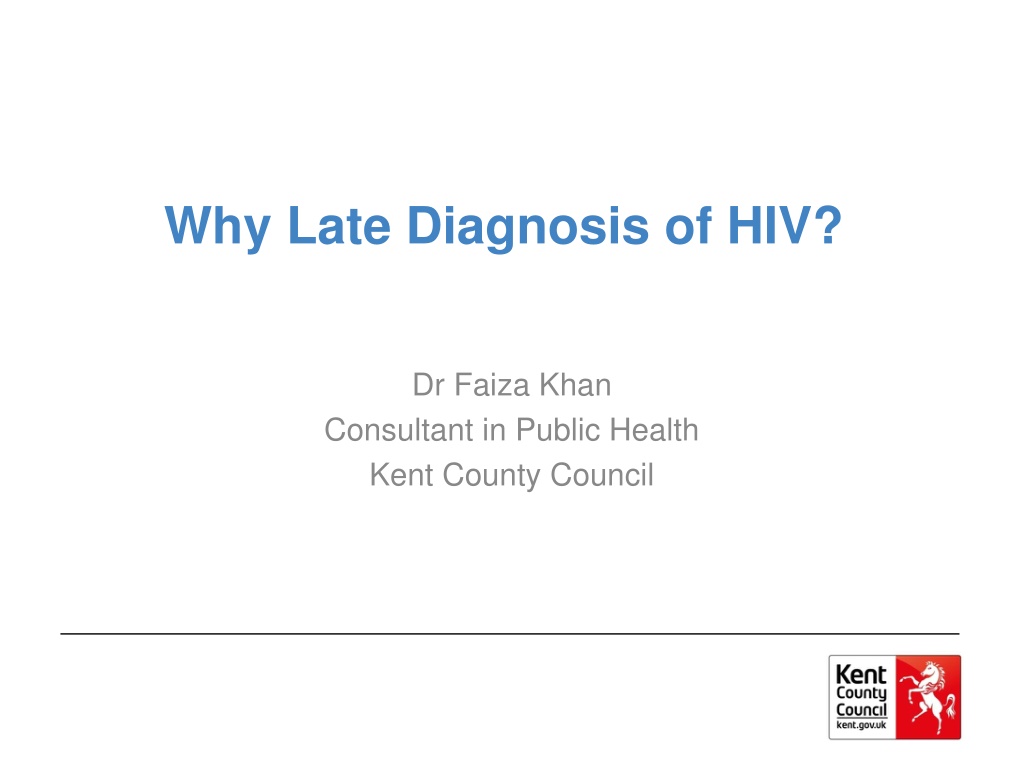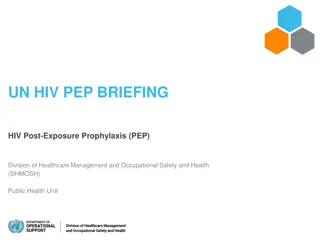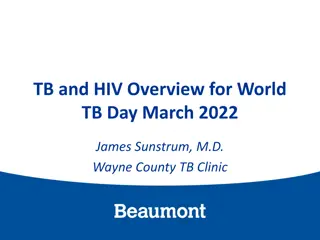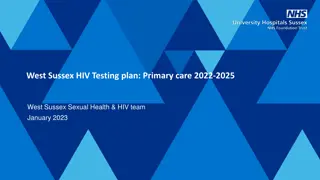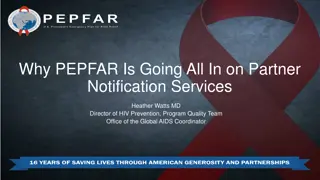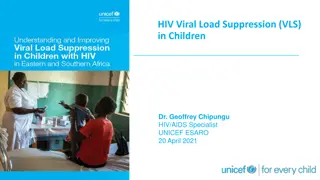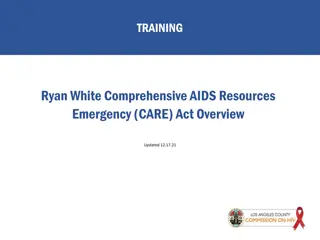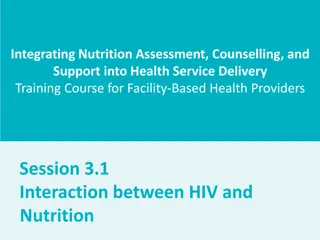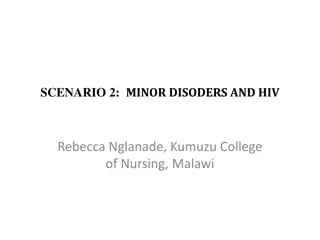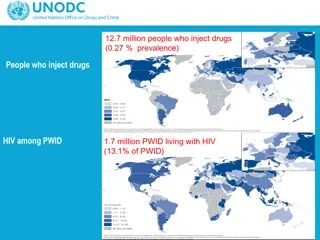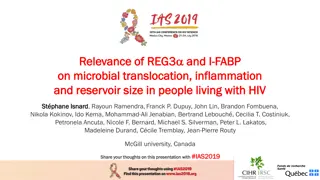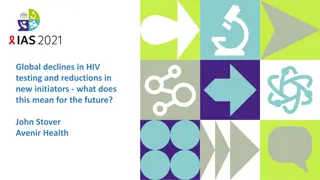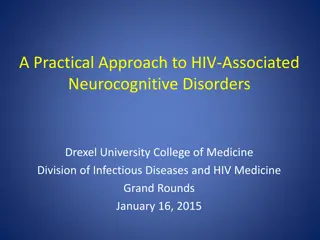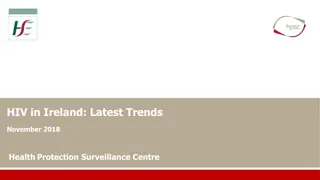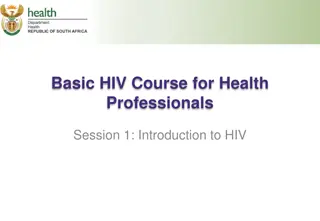Why Late Diagnosis of HIV?
Late diagnosis of HIV in West Kent is a concerning issue as revealed by a recent health equity audit. Analysis of prevalence rates, patient characteristics, and socio-economic factors sheds light on the challenges faced and the need for targeted interventions to improve early detection and outcomes.
Download Presentation

Please find below an Image/Link to download the presentation.
The content on the website is provided AS IS for your information and personal use only. It may not be sold, licensed, or shared on other websites without obtaining consent from the author. Download presentation by click this link. If you encounter any issues during the download, it is possible that the publisher has removed the file from their server.
E N D
Presentation Transcript
Why Late Diagnosis of HIV? Dr Faiza Khan Consultant in Public Health Kent County Council
Background We carried out a Health Equity audit of late diagnosis of HIV in West Kent PCT. The reason for doing this was to: Define the extent of the problem locally and to initiate a process of action. late diagnosis of HIV was above average in West Kent. In 2009, 59.4% of new diagnoses were made late, in contrast to regional average of 52.4% and a national average of 51.3% West Kent was not observing the same decline in late presentation observed nationally, but numbers were small and therefore it was difficult to make an accurate inference; hence the reason to undertake an audit and gain a deeper understanding of the situation.
Prevalence of HIV in West Kent PCT 2006 2007 2008 2009 2010 0.98 1.06 1.25 1.42 1.53 Dartford 1.05 1.19 1.31 1.37 1.23 Gravesham West Kent PCT 0.61 0.78 0.84 0.94 0.89 Maidstone 0.38 0.52 0.54 0.60 0.64 Sevenoaks Tonbridge and Malling 0.28 0.27 0.35 0.34 0.35 0.60 0.60 0.76 0.80 0.90 Tunbridge wells Prevalence of HIV diagnoses (per 1000) for those aged between 15 59 years
Objectives of the audit What is the scale of the problem in West Kent What are the characteristics of people who are diagnosed late What is known about the causes of late diagnosis What are the outcomes for these people What action if any is needed and if so, should this be targeted at any particular group
Audit methodology Inclusion criteria: Patient diagnosed in the last five years in the West Kent area, (five years was agreed as indicative of the current situation) Patients diagnosed in West Kent, but then transferred out, lost to follow up or died were included Patients who transferred in after diagnosis elsewhere were excluded 139 patients met the inclusion criteria
Characteristics of HIV patients Gender-(54%) men and (46%) women. Ethnic origin-Themen were predominantly white (71% of men) and women predominately black Africans (72% of women). Age-The majority of women presented at a younger age while men tended to present slightly later Possible route of transmission-For all of the patients transmission was thought to have occurred through sexual contact. Only one patient reported ever having used intravenous drugs.
Characteristics of HIV patients Socio economic status-Patients belonged to two lower socio-economic quintiles. There were no patients in the highest quintile five. In addition, the lower the socioeconomic group the greater the tendency to present late Place of diagnosis- 46% in GUM clinics 16% in outpatients 15% as inpatients 13% in antenatal clinic 10% in general practice
CD4 Count and late presentation From this cohort of 139 patients 71% patients presented late with a CD4< 350 cells/mm3 48% patients of late presenters were severely immunocompromised, CD4 <200 cells/mm3. 28% patients were noted to be presenting with an AIDS defining illness.
Gender, age and late presentation The proportion of males and females in each CD4 count range < 350 cells/mm3 did not vary significantly. Women were as likely to present late as men. The majority of women presented at a younger age, between 25 and 34 years. Men tended to present slightly later between the ages of 25 to 44 years. This may be a reflection of the age they are contracting the infection or the way they access testing, but it is not possible to infer this from the graph or information collected.
Sexual orientation and late presentation Heterosexual-73% of Heterosexual females presented with a CD4 < 350 cells/mm3 and 47% with a CD4 < 200 cells/mm3. 79% of heterosexual males had a CD4 < 350 cells/mm3 at presentation and 63% with a CD4 < 200 cells/mm3. MSM-62% of MSM presented with a CD4 < 350 cells/mm3 and 36% with a CD4 < 200 cells/mm3. Bisexual-The number of bisexual men in the audit sample was very low and therefore it was difficult to make any comment about the distribution of their presentation.
Location of testing and late presentation Place of diagnosis- 28% in GUM clinics 20% in outpatients 27% as inpatients 9% in antenatal clinic 15% in general practice
Location of testing and late presentation MSM present most often to the GUM clinic with 74% (29 out of 39 patients) testing here. Black African women are diagnosed most often in antenatal clinic with 33% (15 out 46 women) testing here and another 28% (13 out of 46 women) testing in GUM clinics. Six out of the 16 positive Black African men tested in GUM clinics (38%) and the others mainly on hospital admission. Only 8% of these high risk persons tested positive in General practice.
Previous HIV test and late presentation More than two thirds of the hetero sexual males, females and bisexuals patients had never been tested for HIV before Whereas 60% of gay men had previously been tested for HIV.
Recommendations from the audit Continue to collect and analyse local data on the incidence of late diagnosis, especially on groups where the incidence is increasing Gather the views and experiences of the local high risk communities Review the availability of testing services and their accessibility Promote HIV testing Partner with local communities to produce appropriate promotion material and events that increase the awareness of HIV, especially individual risk and offer information on how to access the test. Promotion should extend to key institutions such as the Church and other faith groups Engage local communities and health care professionals and develop methods to reduce barriers to testing Disseminate the findings of this audit Carry out further research to understand the causes of late presentation in Kent
